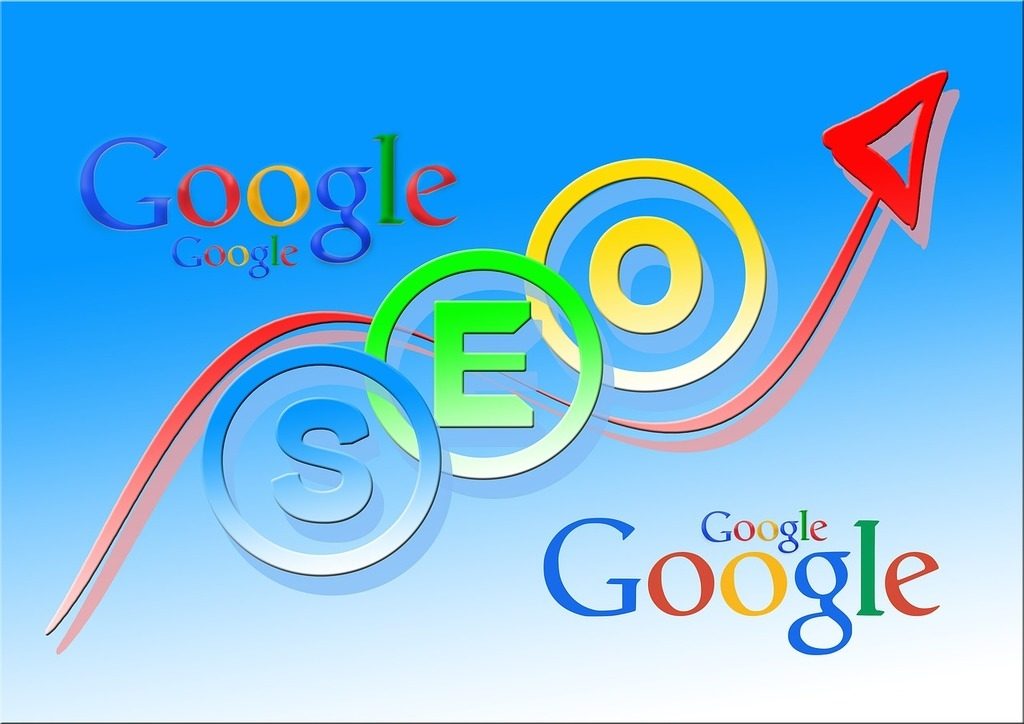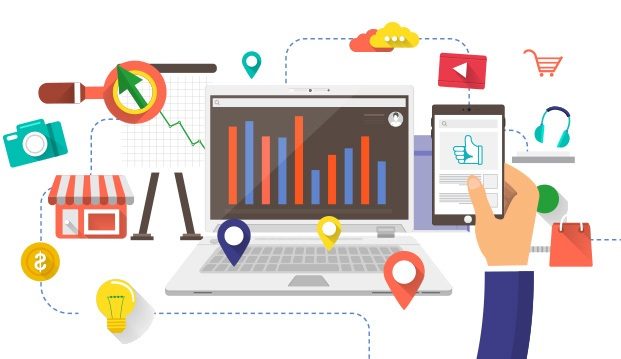 hire us
hire us
 hire us
hire us
December 14, 2019

This report is a summary of a recent seminar we attended in Las Vegas called “UnGagged”. The idea behind the name is top global experts share current digital marketing trends that typically don’t get spoken about, like a secret. We have summarized each subject, sharing the most important facts and suggestions. Download PDF Version Here.
The world is having a conversation! “Conversational Marketing” targets online consumers who no longer want to wait days to get answers, demanding engagement in real time.

This can include solutions like Chat Bots, Live Chat, Messenger, Social Media and Artificial Intelligence like Google Home and Amazon Echo utilizing Voice Search. These solutions are being generated by online media providing content on websites through posting questions and answers just like you would ask in a real conversation.
In the past we could simply choose one or two mediums like a Website using Search Engine Optimization (SEO) and a YouTube channel to get our answers from; this is no longer the case as consumers are now using multiple types of Media platforms.
Yes! With the explosion in population, competition is stronger than ever. Creating a recognizable brand is crucial and it doesn’t matter how large or small your business is. Watch this video supplied by Google to learn about creating unique Brand personas. https://www.youtube.com/watch?v=D5WkP8JZgdw
To stay current companies need to adapt quickly or potentially lose business. The days of relying on only referrals and/or word of mouth is a death sentence waiting to happen.
Question: If you could measure the total length of scrolling for an average daily FB user, how long do you think that would be?
Answer: 300 feet or about 100 meters. When you look at statistical facts like these you begin to realize getting noticed is much harder and just how important it is to include valuable, shareable content.
“FaceBook is all About Who You Are.”
“75% of ad quality is based on creative material through taglines and visual impact.”
Although FB has had many challenges in the last few years from privacy breaches and drops in share value it’s still the largest social network, and when combined with Instagram (most heavily used by millennials) serves all age categories.
Posting constant specials with no intent but to sell products or services does not work well. Posts that include motion graphics, imagery, video and shareable, educational content works the best. To avoid the “just keep scrolling” mindset of today’s consumer, think carefully before you post on social media. Is your information useful and interesting?
Posting real sales and deals is still worthwhile; it’s simply a matter of mixing posts with honest content that engages. “Real sales” means exactly what it sounds like. Do not fabricate a sale for the sake of having something to post.
Advertising on FB is still considered good value; however, prices are increasing and the need to be consistent is crucial. You should allow a percentage of your marketing budget for FB ads and keep them running to create stronger brand awareness.
To overcome this and successfully reach your target client base requires some creativity. For example, if you’re targeting African Americans in the millennial age category certain types of hip-hop music can get you close to this demographic.
If you’re targeting people that like Buddhism, you may want to consider terms like yoga, spiritual, meditation, and similar phrases.
Facebook has recently begun providing features similar to a website. You can now create multiple service pages, events, jobs, marketplaces, and even e-commerce. Some companies are running ads just within FB without driving traffic to their websites.
Asian companies, more than their North American competitors, are using Chat apps and running advertising within those apps with no outside links, encouraging their products/services to be purchased directly within the app.
Although we highly recommend using most services available from FB for ease of accessibility, we still recommend driving traffic to your own website as you should own your intellectual property, instead of Facebook, and control the content and functionality and your privacy policies.
If you have some products to sell, using a mixture of driving traffic to your website and running campaigns within FB will give you an opportunity to try both methods and measure the ROI.
Videos work well for engagement on Facebook and Video Ad costs are less for video ads than other ad providers. The most effective recording method is vertical recordings (portrait orientation) from your smartphone as it fills the whole screen and grabs a person’s attention without looking like an ad.
One of the speakers at the UnGagged Seminar did a test, comparing a $40,000 professionally produced video to a simple user created video on a phone. Incredibly, the down-to-earth, relatable user-based video did substantially better. Consumers want realism, not fake overly produced ads.
Videos are not just specific to Facebook. They can be used on any media that allows video from YouTube to your website and more making them a versatile tool but short videos are crucial!
The first six seconds must clearly outline your message to capture attention. One-third of your audience may go as high as ten seconds so your videos should be short and snappy, then link through to more detailed information on your website. This provides your demographic with a choice which they’ll appreciate and may bookmark to come back to later.
Develop a series of short videos in bite sizes, like it’s a TV series, with each building momentum.
You can use images and turn them into video and get similar results.
Add exciting/funny captions. This not only captures the interest of your demographic but also increases your reach to visually impaired consumers. Your captions can be read aloud.
This exact format does not have to be used, however, it’s been proven to help with creating videos that get attention and are shared.
When I was… (start with a hook)
I believe that…
I started…
By 2020 85% of all Internet traffic will be from mobile devices. Users no longer have the patience to wait for heavy pages to load and websites need to be created for mobile first.
I’m sure many of us have gotten fed up after clicking on an article and watching that spinning wheel. Slow loading pages create a “bounce rate”, that is how many of your potential viewers/customers bounce off the page to a faster website before it loads.
There are several ways to combat this. One is using Google recommended “AMP” pages (Accelerated Mobile Pages) for mobile that has super-fast load times. While this is great in many ways AMP pages are cloud-based, meaning Google has all the control and you lose out on individual organic rankings.
Another alternative is to have your website speed tested and edited to allow faster load times. A custom designed website from scratch can help immensely.
Google has a free test here, https://testmysite.thinkwithgoogle.com/. And here is another speed tester, www.webpagetest.org.
Please note you may have to perform a few tests as your network, current Internet access speed all have an effect that can change your overall score. Both services will show you what can be done to increase speed.
For those editing your own websites, image compression is the number one issue for load time, so ensure each has been compressed.
If your website is using Word Press, there are plug-ins that can be added to automatically compress images to help make needed adjustments, as well as caching plugins to help pages load faster.
There’s no one perfect solution as plugins can often be heavy and slow your site, but the functionality can benefit you in other ways, especially for people who are less technically skilled than a professional developer. A couple of popular options are WP Super Cache, WP Rocket and Hummingbird.
Undervaluing search engine optimization (SEO) is still the largest mistake website owners make. Only 10% of website owners have properly optimized (Seo’d) websites. This provides a huge opportunity for business owners to position themselves competitively.

“Search” is used 85% of the time when consumers are researching their desired product or service prior to making a purchase.
Use of Microsoft’s search engine, Bing is increasing again and should also be considered when your site is optimized, however, the majority of users still use Google. In fact, the Google brand is so powerfully positioned that the term for looking something up on any of the most popular search engines (Bing, Yahoo, etc.) or browsers (Edge, Google Chrome, Firefox, Safari) is referred to as being “Googled”.
SEO is far more complex now than 20 years ago, with 200 algorithms used to position your site among your competitors.
Google has been using artificial intelligence for several years to help with how websites are ranked. Google coined a specific term for this and call it “Rank Brain”.
They do also use real humans called Search Quality Evaluators that test various rankings and report back to Google. They use the Google Quality Guideline that has about 150 pages to guide evaluators.
This Google Quality Guide is said to be a powerful resource for understanding Google’s algorithms and learning about Google’s “Rank brain” and how your SEO is affected. https://static.googleusercontent.com/media/guidelines.raterhub.com/en//searchqualityevaluatorguidelines.pdf.
For companies using Google Pay Per Click (PPC), hopefully, you also have Google Analytics so you can review the search data and help create targeted landing pages. Properly designed landing pages with the right keywords and targets will help reduce costs. If your website ranks well organically and uses a combination of a targeted landing page, written in a conversational tone with your PPC, your conversion rates will also be higher.
Beyond PPC, you can still create landing pages based on search queries using popular words like “Best of” and “Near me”. People are using these words frequently in search engines.
More examples of how search patterns are changing are;
“How should I wash my car?”
“ Best car insurance for me.”
“Which dog is right for me?”
This all ties back to Conversational Marketing which presents your information in a way that speaks with the consumer, not to them and answers the most obvious questions.
Adding an FAQ (Frequently Asked Questions) page, and a Glossary of meanings also helps with rankings and relevance as the content is educational and ties into how well AI recognizes your site information.
If you’re using a Google embedded map on your Contact Us page you may have noticed it’s now disabled unless you sign in and supply a credit card.
GMB has changed substantially over the years; from minor changes in services names [Google Maps to Google My Business] to functionality adaptations, trying to compete with Facebook and Skype through Google “hangouts” or reducing “free” services. Google will give you $ 200.00 worth of credits and you may not have to pay anything depending on if you choose to use just the map, or if you use advanced features like “paid ads” right on GMB. The best ways to use GMB is to ensure you have a full description of your services, hours of operation, images, video, and reviews.
You can now ask questions directly on GMB and include specials and events.
You can preload questions and answers yourself in GMB.
88% use GMB for driving directions.
If you work with LGBTQ, now you can have the symbol shown directly on GMB.
Reviews on GMB is crucial. Often, Google My Business (formerly Google Maps) profiles will often display before your own organic site results, so consumers pay very close attention to Google and reviews on your Google My Business profile. Making sure you respond to all reviews, good or bad, and including a keyword in the response can also help with rankings and perception. A bad review may lose you business, but a bad review with a good “owner response” takes responsibility and shows you care about your consumer experience. Even if it’s just by respectfully telling the other side of the story.
This is the Google AI (artificial intelligence) speaker we are currently using. This technology is expanding rapidly and ties directly into voice search. When you ask a local based question, Google selects the top three listings in GMB.
There are now only three spots for GMB versus seven in the past. Now that it’s linked to the AI from Google Home it’s crucial to have your ranking in what is called the three pack.
Beyond general search results, AI speakers like Google Home, Amazon’s Echo with Alexa, are increasingly used for automating homes from lighting to security. This segment is huge and will only continue to grow, from booking a haircut, placing an order at a restaurant and will allow full e-commerce.
Users want to ensure their data is secure and encrypted when they are filling out your forms with sensitive data and/or providing credit cards.
This has been around for many years and the number of website users still asking for sensitive data without the proper security is alarming. Most of us know when using a credit card on a website or app, that if you don’t see the padlock in the address bar with a valid link to the certificate in the upper left portion of your web browser not to provide your credit card, but most people don’t think about their security otherwise.
SSL is the short form of Secure Sockets Layer. This application creates a secure connection to send data in an encrypted format between your website page and your email or another delivery point.
Google and Google Chrome, Microsoft Edge and all other browsers have stepped up the demand for security. If you don’t have an SSL Certificate the browser shows a warning that says your site is not secure even if your site does not ask for personal data because today even your name and email address is considered private. It also helps validate the probable authenticity of your site identity.
Most hosting companies are moving towards offering a basic “shared” SSL certificate for free. If your website is not full e-commerce and does not require a “wild card” SSL for subdomains this is fine. If you provide e-commerce you will want your own dedicated SSL versus a free shared SSL, but there are many types (and related insurance in case of a failure in the SSL encryption) offered.
Three of the most popular and recognized SSL providers are: Comodo, GeoTrust, and RapidSSL, although there are others. Be sure you do your due diligence before purchasing an SSL. Usually, it is recommended that you buy one directly from your host provider.
For many business owners, most of their customers are local. There are certain tricks that can be used to help enhance your local search strength like;

Content is still king, and many people have challenges coming up with new content. There are ways to reuse existing articles that are popular.
To do this you repackage your existing article and simply edit it to be slightly different. This allows you to create a new one or multiple new ones.
Audit Content
Distribution
This information doesn’t have to be used just for reusing existing articles; by adding current articles to various media channels you’ll create more interest and allows more sharing platforms.
I admit I absolutely hate this part of the Internet, however, whether we like it or not evil has been around since the beginning of humankind.
We are not talking about hacking a website, although that’s bad enough now these same types of individuals can completely screw your rankings and your data through “Black Hat” strategies.
First, “big data” is used all the time to analyze how well a paid campaign is going and companies make changes based on this data. The same goes for Google Analytics and it too can be fed false data.

Facebook has huge amounts of data too; which with enough effort and an unscrupulous ethic, can be messed with through a variety of techniques such as creating fake URLs (web page addresses) that are from a different demographics and locations.
Automatic scripts hackers have created can spoof these URLs in the thousands. If a company is checking the demographics and locations of visitors, and find the data is showing a different age demographic and location, you may choose to change your campaigns to match, but end up wasting valuable marketing budget and missing out on your true demographic.
Can you imagine how frustrating this could be? Paid campaigns are expensive and big data is crucially important to analyze, yet all your data is now skewed and inaccurate.
Not to be confused with the cute little primate “Slow loris”, this nasty little code will create a denial of service and shut a website server down with only one computer. Slowloris works by opening multiple connections to the targeted web server and keeping them open as long as possible. Eventually, the site shuts down.
If this is done over a period of time, the rankings of the website and of course customers using the website may not return.
Here’s an example of how it’s done, https://www.youtube.com/watch?v=8rLb4ESe-0I.
There is even a hack to slow a website down, that eventually will result in visitor abandonment.
NEVER resort to illegal methods to compete or cause harm with anyone, period. The only reason we are sharing this is so you’re aware these kinds of attacks can, and do, take place. Don’t blame your webmaster, it’s highly doubtful it was them!
Need any help implementing any of this technology? Click here to Contact Us, were all about educating you first! Let’s start a conversation.